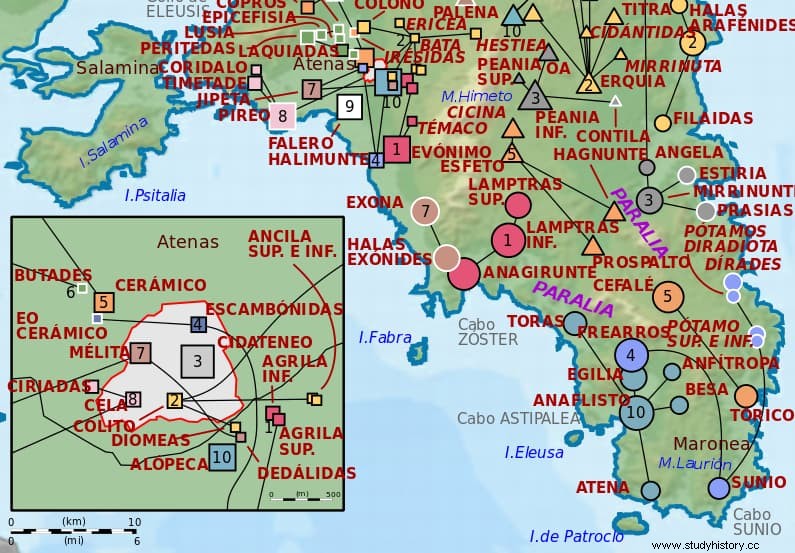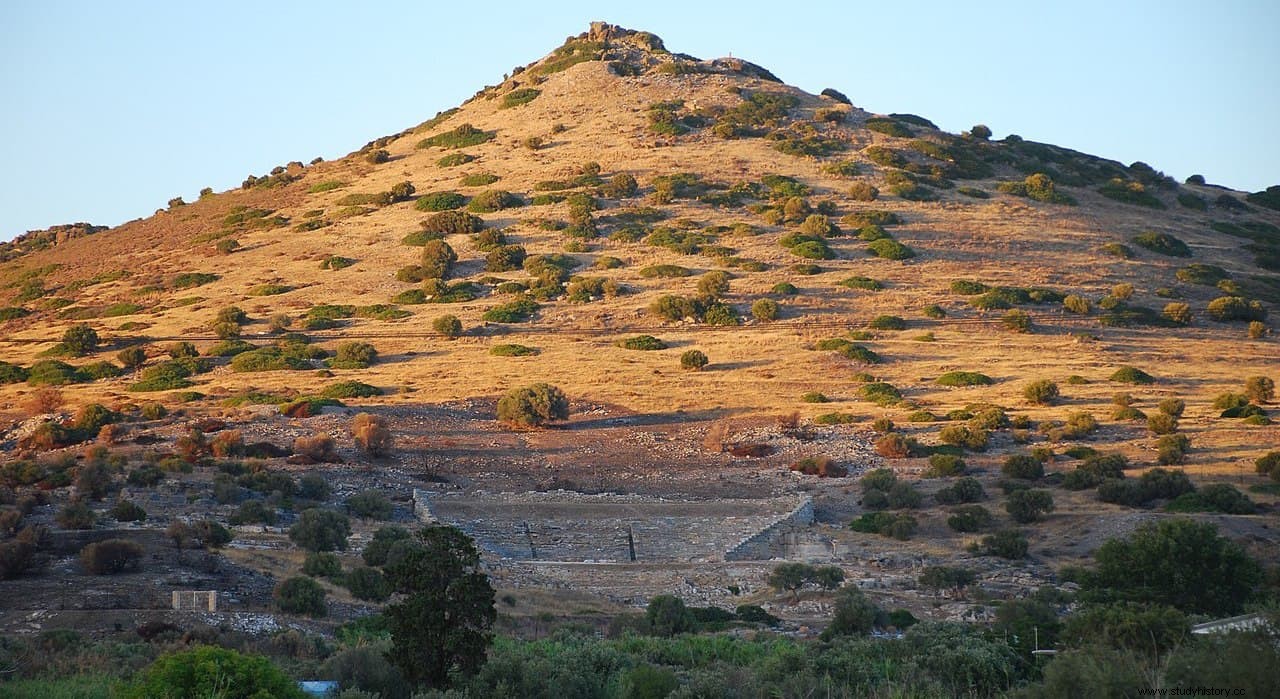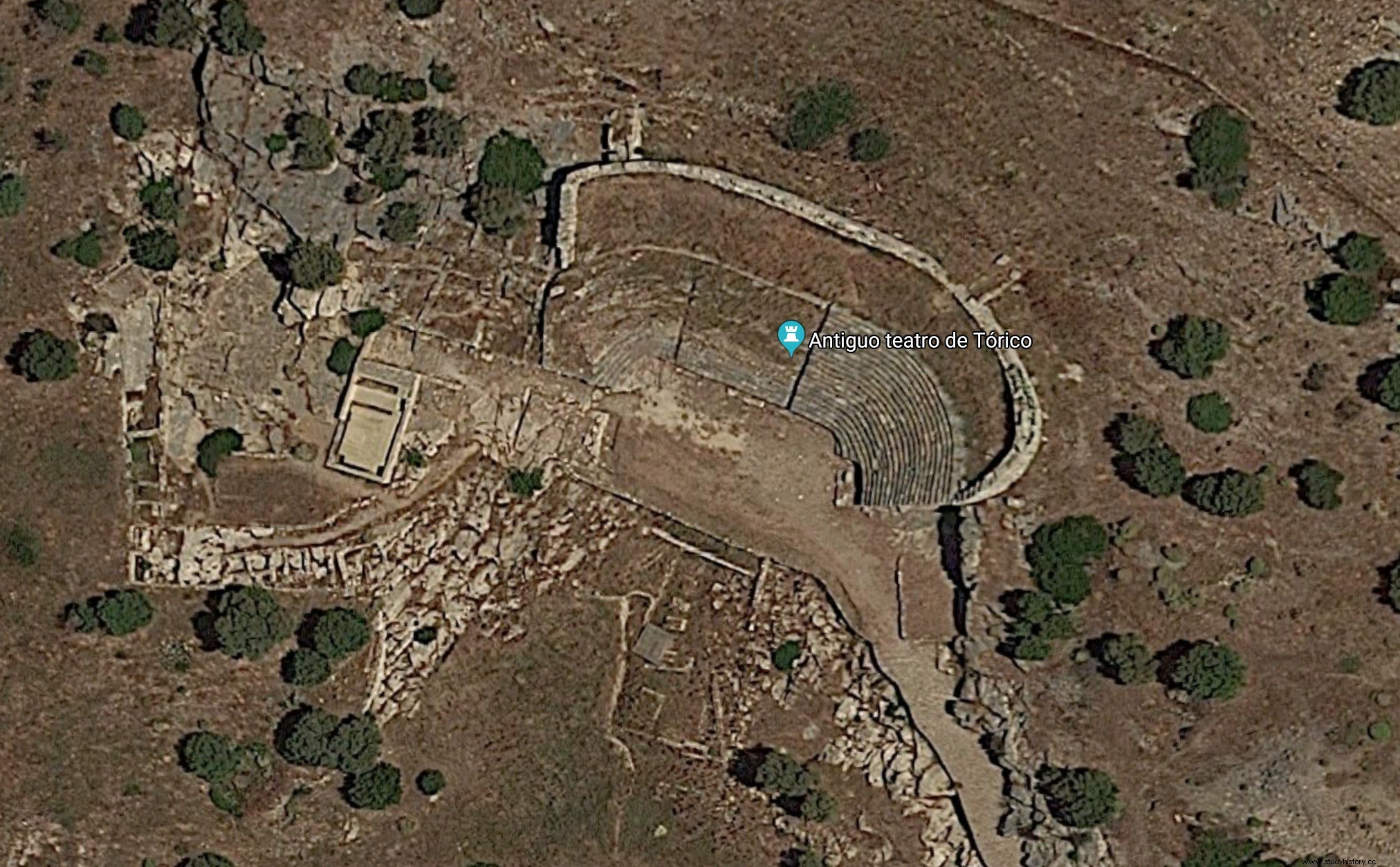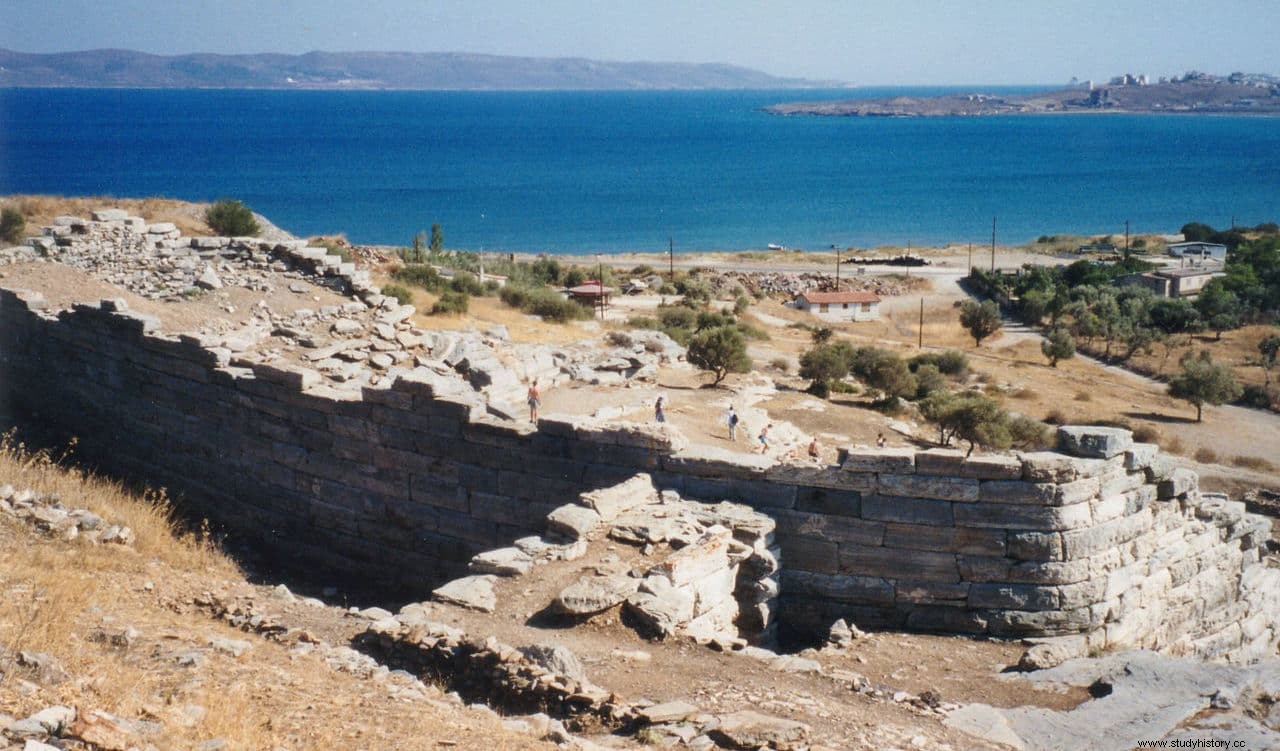Some time ago we talked about Torico here as a result of the discovery of an extensive network of mining galleries, the oldest in all of Greece. No less than 5 kilometers of marble-lined underground chambers, shafts and conduits dating from the late Neolithic onwards, where silver and lead were mined.

The remains of Torico are on the southeastern coast of Attica, north of Cape Sounion and near the Bay of Laurion or Lavrio, which is the modern name of the city. Strabo affirms that it was one of the 12 cities founded by Cecrops, the mythical king of Athens, and that Theseus would later incorporate to form the great city.
The Mycenaeans also exploited the rich mines in the area, and proof of this are the tholos tombs (circular, underground and covered with a false dome) characteristic of that time, the fifteenth century BC, that have been found.

On the hill now called Velatouri are the acropolis and the remains of the old city center, houses, workshops, a small temple and stoas. A large Doric temple from the end of the 5th century BC. dedicated to Demeter and Koré (Persephone) it was excavated by the London Dilettantes Society in 1817. However, it would not be until 1886 that the first modern archaeological excavations would be carried out, by Walter Miller.
Miller had a clear objective, to find the Torico theater. He discovered it on the southern flank of the hill, carved into the hillside, with its 21 rows of seats and an impressive capacity of more than 3,000 spectators. Built at the end of the archaic era, between 525 and 480 BC, it is the oldest Greek theater of all. But also the rarest and strangest.
And it is that, unlike those that would be built later, the Torico theater has an elliptical shape instead of semicircular, with a diameter of the cavea that reaches 53 meters, and the orchestra is rectangular instead of circular. According to the researchers, it was not only intended for theatrical performances, but was also used for meetings of the citizens' assembly.

The upper cavea was added at a later stage, after the construction of a new retaining wall. The space in between was covered with benches to get the proper incline to help viewers sit, either directly on the floor or on wooden seats in 10 or 12 rows. The upper cavea was accessed through two entrances on the north side, behind that retaining wall. The eastern entrance was a single paved passageway, while the western one was built as a bridge, supported by a pointed arch.
The theater is built from a rough greenish-brown limestone found locally. The upper cavea retaining wall is carefully constructed of limestone carved into rectangular blocks. After the construction of the upper cavea, the capacity of the theater increased from 2,000 to 3,200 spectators.
It has never been completely restored, and today it remains forgotten, except for the few tourists who come to contemplate it from time to time.

Almost a century after the construction of the theater, in 409 B.C. during the Peloponnesian War, the Athenians fortified Torik to protect their mines. Walls 600 meters long were built, some of which are still visible, with six towers and seven access doors.
Sulla and his legions destroyed the city of Torico in 86 BC, in the first Mithridatic War. Rebuilt later, during the Roman domain it remained inhabited and even Pausanias was able to visit it. But by the 6th century AD. it had been completely abandoned, like most of Attica, due to the Slavic invasions.
The few people who visit the site today can see the base of an ancient rock-cut temple on the east side of the theater orchestra, and a room with benches.
